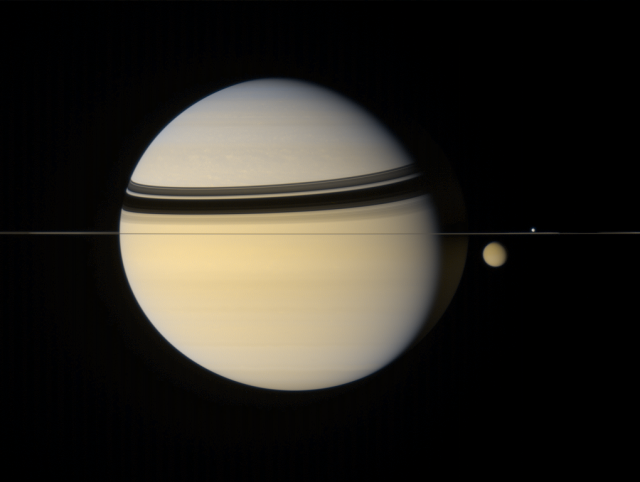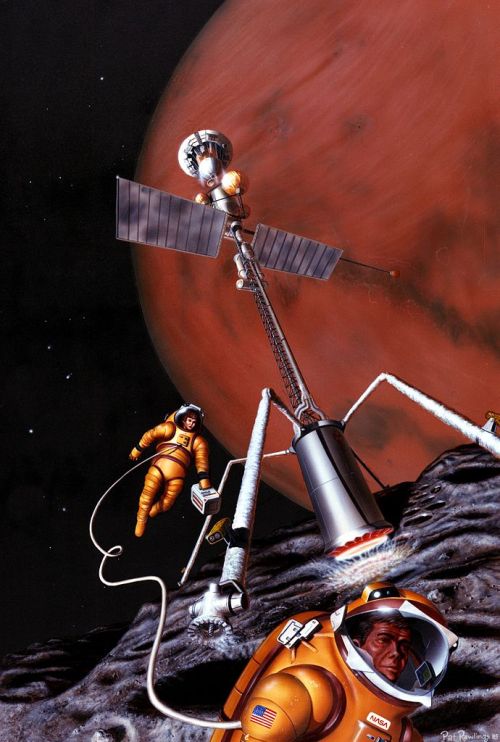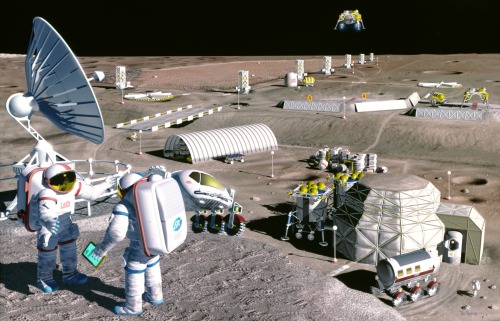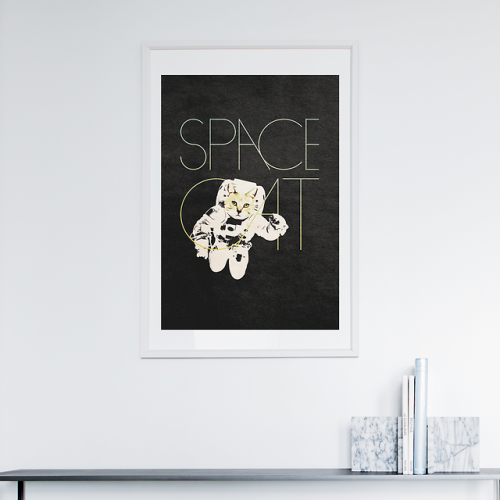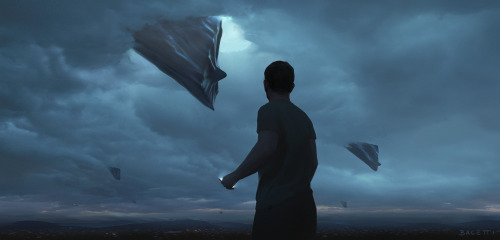#espaço

A giant cosmic necklace glows brightly in this Hubble Space Telescope image. The object, aptly named the Necklace Nebula, is a recently discovered planetary nebula, the glowing remains of an ordinary, Sun-like star.
Credit: NASA, ESA and the Hubble Heritage Team (STScI/AURA)


Mounded, luminous clouds of gas and dust glow in this Hubble image of a Herbig-Haro object known as HH 45. Herbig-Haro objects are a rarely seen type of nebula that occurs when hot gas ejected by a newborn star collides with the gas and dust around it at hundreds of miles per second, creating bright shock waves.
Credit: NASA, ESA, and J. Bally (University of Colorado at Boulder); Processing: Gladys Kober (NASA/Catholic University of America)

This Hubble image captures a portion of a dark nebula in the constellation Cepheus. Dark nebulae ― also called absorption nebulae ― are clouds of gas and dust that neither emit nor reflect light, instead blocking light coming from behind them. These nebulae tend to contain large amounts of dust, which allows them to absorb visible light from stars or nebulae beyond them.
Credit: NASA, ESA, T. Megeath (University of Toledo), and K. Stapelfeldt (Jet Propulsion Laboratory); Processing: Gladys Kober (NASA/Catholic University of America)

This comparison view shows puffing dust bubbles and an erupting gas shell — the final acts of a monster star.
AG Carinae is formally classified as a Luminous Blue Variable because it is hot (blue), very luminous, and variable. Such stars are quite rare because there are not many stars that are so massive. Luminous Blue Variable stars continuously lose mass in the final stages of their life, during which a significant amount of stellar material is ejected into the surrounding interstellar space, until enough mass has been lost that the star has reached a stable state.
AG Carinae is surrounded by a spectacular nebula, formed by material ejected by the star during several of its past outbursts. The nebula is approximately 10 000 years old, and the observed velocity of the gas is approximately 70 kilometres per second. While this nebula looks like a ring, it is in fact a hollow shell rich in gas and dust, the centre of which has been cleared by the powerful stellar wind travelling at roughly 200 kilometres per second.
Credits: ESA/Hubble and NASA, A. Nota, C. Britt

Messier 89 galaxy by Hubble space telescope
Credit: NASA/ESA, Hubble

This image shows knots of cold, dense interstellar gas where new stars are forming. These Free-floating Evaporating Gaseous Globules (frEGGs) were first seen in Hubble’s famous 1995 image of the Eagle Nebula. Because these lumps of gas are dark, they are rarely seen by telescopes. They can be observed when the newly forming stars ignite, their intense ultraviolet radiation eroding the surrounding gas away and letting the denser, more resistant frEGGs remain. These frEGGs are located in the Northern Coalsack Nebula in the direction of Cygnus.
Credit: NASA, ESA, and R. Sahai (Jet Propulsion Laboratory); Processing: Gladys Kober (NASA/Catholic University of America)

M97: The Owl Nebula
The Owl Nebula is perched in the sky about 2,600 light-years away toward the bottom of the Big Dipper’s bowl. Also cataloged as M97, the 97th object in Messier’s well-known list, its round shape along with the placement of two large, dark “eyes” do suggest the face of a staring owl. One of the fainter objects in Messier’s catalog, the Owl Nebula is a planetary nebula, the glowing gaseous envelope shed by a dying sun-like star as it runs out of nuclear fuel.
Credit:Keith Quattrocchi
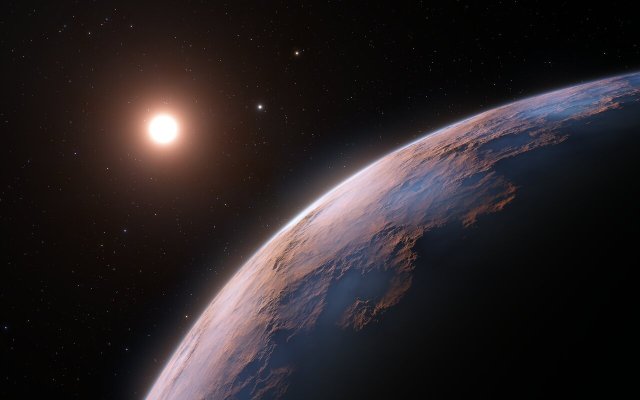
New planet detected around star closest to the Sun
A team of astronomers using the European Southern Observatory’s Very Large Telescope (ESO’s VLT) in Chile have found evidence of another planet orbiting Proxima Centauri, the closest star to our Solar System. This candidate planet is the third detected in the system and the lightest yet discovered orbiting this star. At just a quarter of Earth’s mass, the planet is also one of the lightest exoplanets ever found. (source)
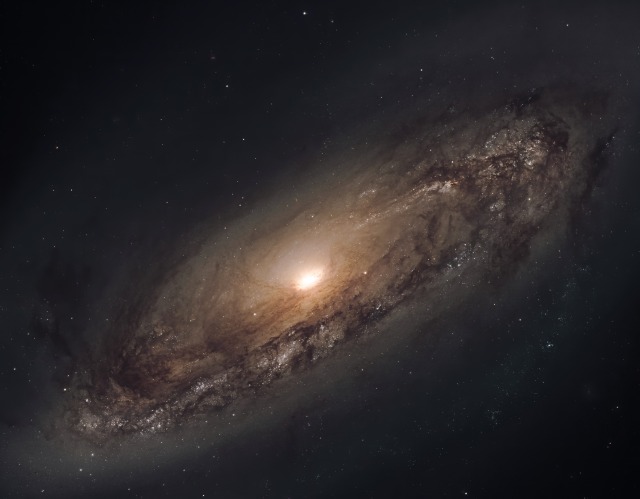
A view of NGC 4569, aka Messier 90, an intermediate spiral galaxy located 60 million light-years away in the constellation Virgo.
Credit: NASA/ESA, STScI, Janice Lee, Jason Major

Widefield Cassiopeia in a cloudy moonlit summernight at 20 C
Cassiopeia (listen) is a constellation in the northern sky named after the vain queen Cassiopeia, mother of Andromeda, in Greek mythology, who boasted about her unrivaled beauty. Cassiopeia was one of the 48 constellations listed by the 2nd-century Greek astronomer Ptolemy, and it remains one of the 88 modern constellations today. It is easily recognizable due to its distinctive ‘W’ shape, formed by five bright stars.
Credit: Johannes Schedler

Open cluster known as NGC 2164, which was first discovered in 1826 by a Scottish astronomer named James Dunlop. NGC 2164 is located within one of the Milky Way galaxy’s closest neighbours — the satellite galaxy known as the Large Magellanic Cloud.
Credits: ESA/Hubble & NASA, J. Kalirai, A. Milone
“Em Fobos, a lua mais interna de Marte e local de prováveis recursos extraterrestres, uma usina móvel de produção de propelentes se arrasta por toda a superfície irregular. Usando um reator nuclear, a grande torre derrete a superfície, gerando vapor, que é convertido em hidrogênio e oxigênio líquidos”. (texto: NASA).
“On Phobos, the innermost moon of Mars and likely location for extraterrestrial resources, a mobile propellant-production plant lumbers across the irregular surface. Using a nuclear reactor the large tower melts into the surface, generating steam which is converted into liquid hydrogen and liquid oxygen”. (from NASA).
Pat Rawlings, 1986.
Post link
Concepção artística de uma colônia de mineração na Lua
Artist’s concept of a mining colony on the Moon.
Pat Rawlings, 1995.
Post link
Concepção artística de uma missão tripulada de longa duração em Marte.
Artist’s conception of a long duration human misson to Mars.
Les Bossinas, 1989.
Post link

